From May 13-20, the seventh annual Infrastructure Week is taking place with the support of hundreds of affiliates across the country. Infrastructure Week was created to help raise awareness for our country’s growing infrastructure needs and stress the message that we must #BuildForTomorrow. Led by a coalition of businesses, labor organizations and policy organizations, this week will unite the public and private sector to send this important message to leaders in Washington and beyond.
No matter where you live, your age, your education, if you drive a car or a truck or take the bus or a bicycle, infrastructure has a profound impact on your daily life. We all have to get around. We all need lights to come on and water to come out of the tap.
Consequently, too much of our nation’s infrastructure is under-maintained, too old, and over capacity. When it comes to water infrastructure alone, we are dealing with a massive network of pipes that are well over 100 years old. In short, droughts in western states have caused wells and reservoirs to fall dangerously low; saltwater intrusion of Florida’s drinking water infrastructure, and dam and levee failures in California, South Carolina, and Louisiana have caused evacuations and put hundreds of thousands of people and homes at risk.
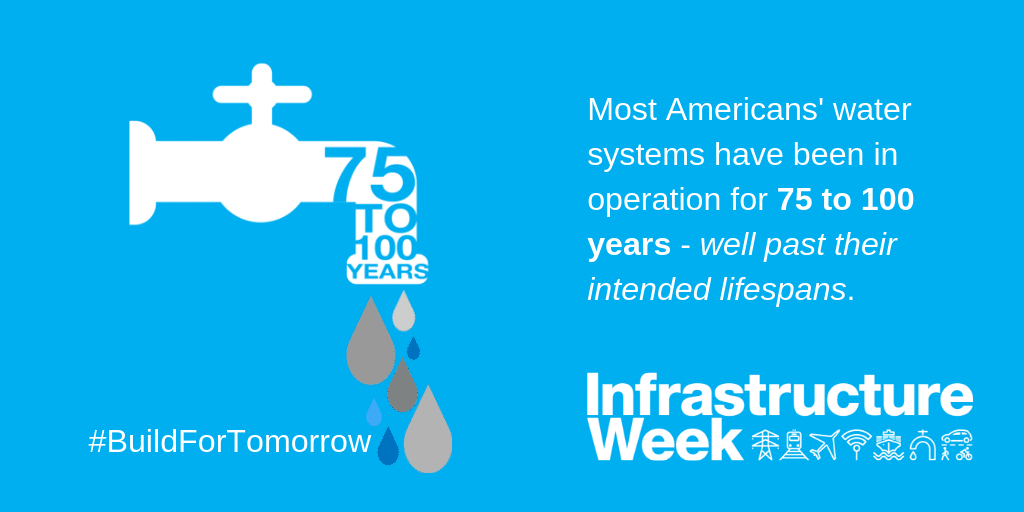
The High Cost of Water Infrastructure
And this is just the tip of the iceberg. A study conducted by the American Water Works Association revealed that the cost to replace our nation’s water infrastructures would cost more than one trillion dollars over the next 25 years.
No state, city, or county alone can tackle the growing backlog of projects of regional and national importance, and Americans get it: more than 79 percent of voters think it is extremely important for Congress and the White House to work together to invest in infrastructure.
For years, near-unanimous, bipartisan support for infrastructure investment has been steadily increasing. Leaders and voters have been rolling up their sleeves to spark efforts in the rebuilding and modernizing of transportation, water, and energy systems. Certainly, large strides have been made as a country, but there is still a lot to be done.
Every four years, the American Society of Civil Engineers (ASCE) publishes The Report Card for America’s Infrastructure, which grades the current state of the nation’s infrastructure on a scale between A and F. The last survey from 2017 gave tremendous insight into the state of our infrastructure surrounding drinking water, dams, and wastewater.
Drinking Water Infrastructure
The drinking water that we get in our homes and businesses all comes from about one million miles of pipes across the country. While the majority of those pipes were laid in the early to mid-20th century, many are showing signs of deterioration. There are many reasons for a water main to break including localized influences such as aggressive soil and weather conditions, as well as poor design/construction. Approximately 240,000 occur each year, consequently resulting in the waste of two trillion gallons of treated drinking water. Drinking Water received a grade of D.
Dams
The average age of the 90,000+ dams in the United States is 56. Nearly 16,000 (~17%) have been classified as high-hazard potential. Dam failures not only risk public safety, they also can cost our economy millions of dollars in damages as well as the impairment of many other infrastructure systems, such as roads, bridges, and water systems. As a result, emergency action plans (EAPs) for use in the event of a dam failure or other uncontrolled release of water are vital. As of 2015, 77% of dams have EAPs – up from 66% in the last 2013 Report Card. Dams received a grade of D.
Wastewater
There are approximately 15,000 wastewater treatment plants across the U.S that are critical for protecting public health and the environment. In the next 15 years, it is expected that there will be 56 million new users connected to the centralized treatment system. This need comes with an estimated $271 billion cost. Maintaining our nation’s wastewater infrastructure is imperative for the health and well being of the 76% of the country that rely on these plants for sanitary water. Wastewater received a grade of D+.
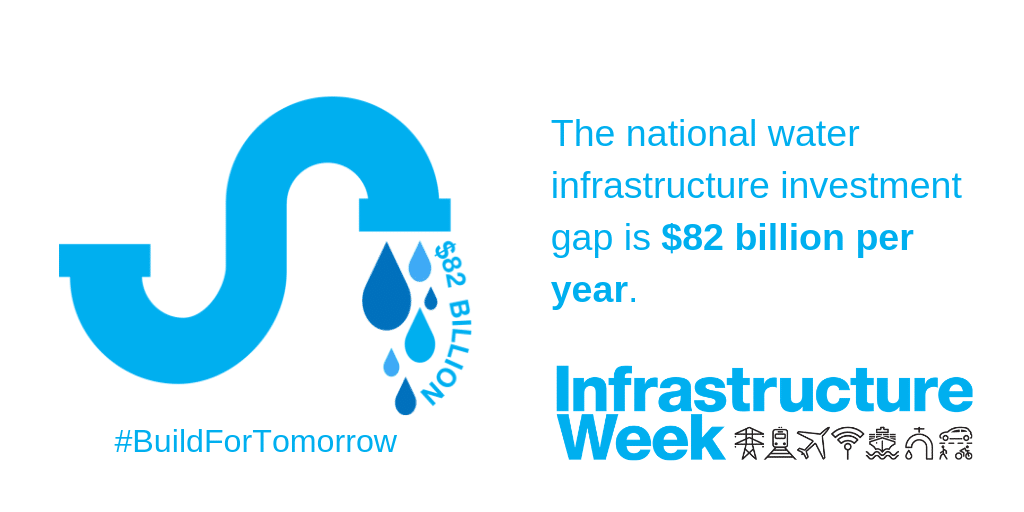
In the water sector alone, it’s clear how heavily we rely on solid infrastructure. If the issues in our nation’s water infrastructure are not addressed, millions of people as well as our environment will be at risk. Many communities around the country are working hard to deliver projects to solve these problems – but there is always more to be done. Reversing the trajectory after decades of under-investment requires transformative action from Congress, states, infrastructure owners, and the American people. Join us this week to help spotlight the continued advocacy and education of infrastructure needs. Afterall, this is the true foundation that connects our country’s communities, businesses, and people.

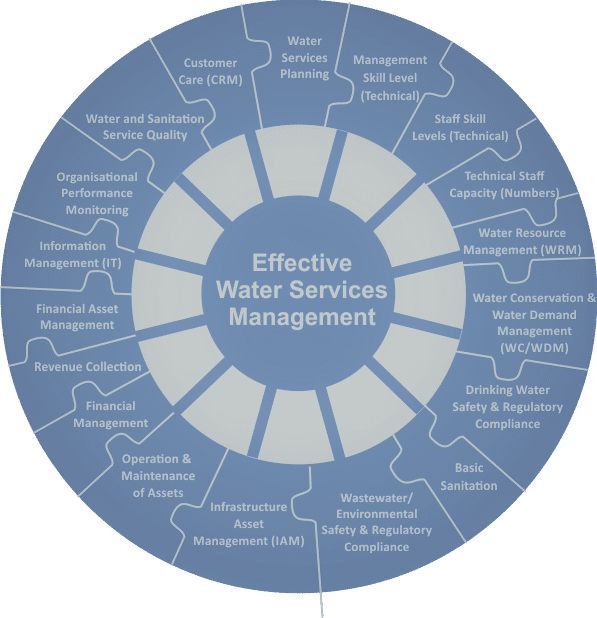 Emergency Response Plans (ERPs) are mandatory for all public water suppliers, and a minimum of 10 hours of Emergency Response Training is required. ERP training is a process that helps water system managers and staff explore vulnerabilities, make improvements, and establish procedures to follow during an emergency. Preparing and practicing an ERP can save lives, prevent illness, enhance system security, minimize property damage, and lessen liability.
Emergency Response Plans (ERPs) are mandatory for all public water suppliers, and a minimum of 10 hours of Emergency Response Training is required. ERP training is a process that helps water system managers and staff explore vulnerabilities, make improvements, and establish procedures to follow during an emergency. Preparing and practicing an ERP can save lives, prevent illness, enhance system security, minimize property damage, and lessen liability.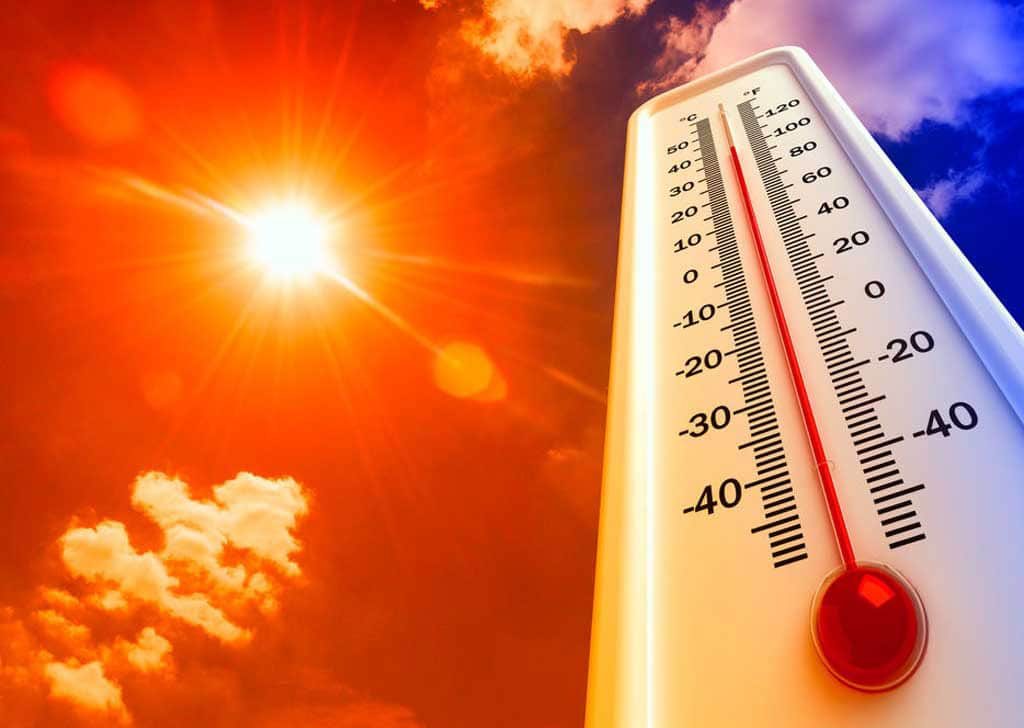 The most alarming news is the hottest temperature ever reliably recorded reached 124.3 degrees in Algeria this July.
The most alarming news is the hottest temperature ever reliably recorded reached 124.3 degrees in Algeria this July.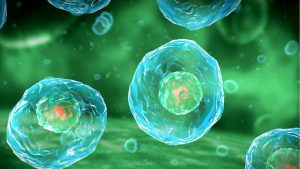 Wastewater treatment plants that use aerobic bacteria must provide oxygen with huge and costly electrically powered blowers for these microorganisms to survive. Anaerobic bacteria treatment processes do not need oxygen and use considerably less energy, making the wastewater treatment process more economical to operate. In addition to saving money, engineers believe these anaerobes can filter household and industrial chemicals better than conventional treatment plants.
Wastewater treatment plants that use aerobic bacteria must provide oxygen with huge and costly electrically powered blowers for these microorganisms to survive. Anaerobic bacteria treatment processes do not need oxygen and use considerably less energy, making the wastewater treatment process more economical to operate. In addition to saving money, engineers believe these anaerobes can filter household and industrial chemicals better than conventional treatment plants.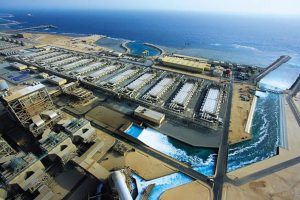
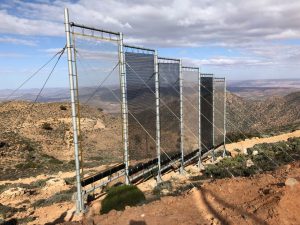

 When NASA recently announced the discovery of liquid water flowing under an ice cap on Mars, it opened the exciting possibility that life may exist outside our earthly abode. While it is conceivable scientists may eventually discover life somewhere in our galaxy, a reliable source of water outside earth is fundamental for the possibility of establishing a colony on Mars, exploring the universe and even visiting distant planets in search of life outside earth.
When NASA recently announced the discovery of liquid water flowing under an ice cap on Mars, it opened the exciting possibility that life may exist outside our earthly abode. While it is conceivable scientists may eventually discover life somewhere in our galaxy, a reliable source of water outside earth is fundamental for the possibility of establishing a colony on Mars, exploring the universe and even visiting distant planets in search of life outside earth. But hauling tons of supplies and materials to the International Space Station (ISS) is inefficient and extremely expensive. Sustaining a crew of four astronauts on the ISS with water, power and other supplies, costs nearly one million dollars a day. Even with the reusable SpaceX rocket which regularly provides supplies to the ISS, it costs $2,500 per pound to launch into space. With four astronauts living on the ISS needing approximately 12 gallons of water a day, it is impractical to stock the ISS with the tons of water needed for long periods of time.
But hauling tons of supplies and materials to the International Space Station (ISS) is inefficient and extremely expensive. Sustaining a crew of four astronauts on the ISS with water, power and other supplies, costs nearly one million dollars a day. Even with the reusable SpaceX rocket which regularly provides supplies to the ISS, it costs $2,500 per pound to launch into space. With four astronauts living on the ISS needing approximately 12 gallons of water a day, it is impractical to stock the ISS with the tons of water needed for long periods of time.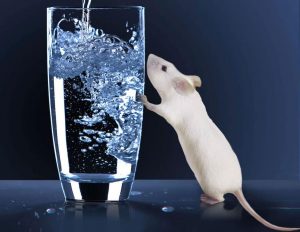 If the idea of drinking reclaimed water from mice urine and other waste sources sounds unappetizing, consider this, the water the astronauts drink is often cleaner that what many earthlings drink. NASA regularly checks the water quality and it is monitored for bacteria, pollutants and proper pH (60 – 8.5).
If the idea of drinking reclaimed water from mice urine and other waste sources sounds unappetizing, consider this, the water the astronauts drink is often cleaner that what many earthlings drink. NASA regularly checks the water quality and it is monitored for bacteria, pollutants and proper pH (60 – 8.5).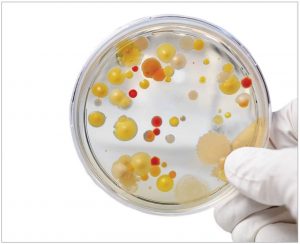 Recently, NASA invested in a new, lower cost solution to biologically recycle and reuse water developed by
Recently, NASA invested in a new, lower cost solution to biologically recycle and reuse water developed by 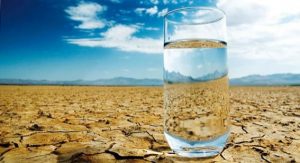 Pancopia is currently working on a similar system used on the ISS for municipal wastewater facilities. Using the technology developed for the Space Station, other areas in the world with limited access to clean drinking water, will soon be able to utilize this advanced water filtration and purification system.
Pancopia is currently working on a similar system used on the ISS for municipal wastewater facilities. Using the technology developed for the Space Station, other areas in the world with limited access to clean drinking water, will soon be able to utilize this advanced water filtration and purification system.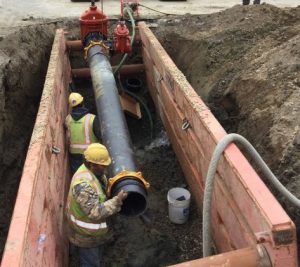 Financing for The Clean Water SRF Program helps municipalities with federal and state compliance water-quality requirements, focusing on stormwater and watershed management priorities, and green infrastructure. The Drinking Water SRF Program, provides low-interest loans to communities to improve their drinking water safety and water supply infrastructure.
Financing for The Clean Water SRF Program helps municipalities with federal and state compliance water-quality requirements, focusing on stormwater and watershed management priorities, and green infrastructure. The Drinking Water SRF Program, provides low-interest loans to communities to improve their drinking water safety and water supply infrastructure.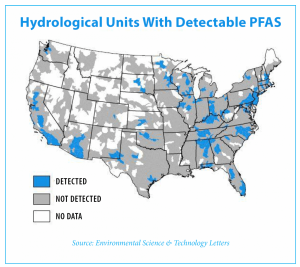 According the Environmental Protection Agency (EPA), all these UCMR 3 PFAS compounds have been detected in public water supplies across the US. Since PFAS are considered emerging contaminants, there are currently no established regulatory limits for levels in drinking water. However, in 2016, the EPA set Health Advisory levels (HA) of 0.07 micrograms per liter (µg/L) or 70 parts per trillion (ppt) for the combined concentrations of two PFAS compounds, PFOS and PFOA.
According the Environmental Protection Agency (EPA), all these UCMR 3 PFAS compounds have been detected in public water supplies across the US. Since PFAS are considered emerging contaminants, there are currently no established regulatory limits for levels in drinking water. However, in 2016, the EPA set Health Advisory levels (HA) of 0.07 micrograms per liter (µg/L) or 70 parts per trillion (ppt) for the combined concentrations of two PFAS compounds, PFOS and PFOA.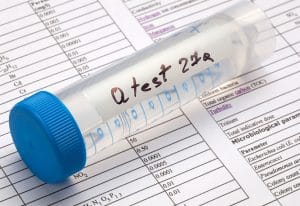 The EPA also recommends that treatment be implemented for all five PFAS when one or more of these compounds are present.
The EPA also recommends that treatment be implemented for all five PFAS when one or more of these compounds are present.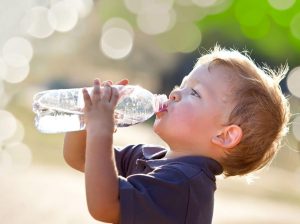 Most research on the effects of PFAS on human health is based on animal studies. And, although there is no conclusive evidence that PFAS cause cancer, animal studies have shown there are possible links. However, PFAS ill-health effects are associated with changes in thyroid, kidney and liver function, as well as affects to the immune system. These chemicals have also caused fetal development effects during pregnancy and low birth weights.
Most research on the effects of PFAS on human health is based on animal studies. And, although there is no conclusive evidence that PFAS cause cancer, animal studies have shown there are possible links. However, PFAS ill-health effects are associated with changes in thyroid, kidney and liver function, as well as affects to the immune system. These chemicals have also caused fetal development effects during pregnancy and low birth weights.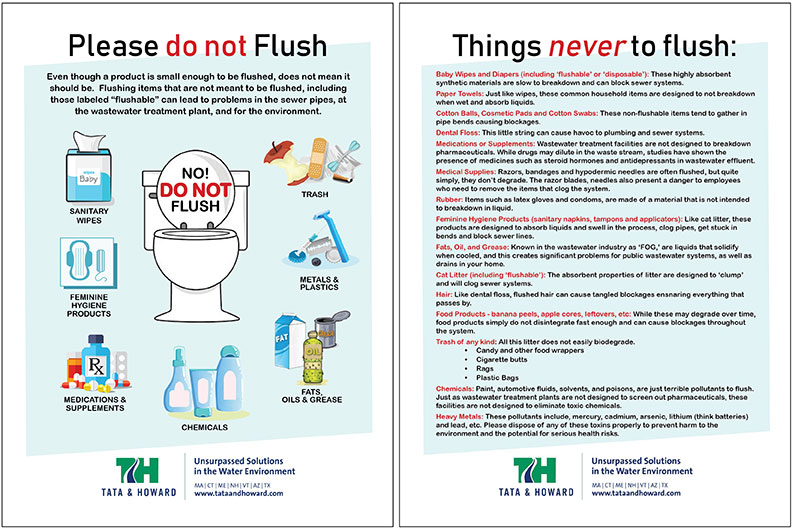
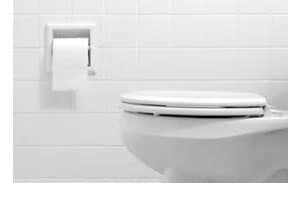 While there are many obvious things not to flush down the toilet, an astonishing amount of non-flushable wipes, paper products, dental floss, and other dispensable hygiene products are flushed down toilets every day. This has contributed to cities and municipalities dealing with chronic clogged sewer systems and expensive wastewater treatment maintenance, not to mention homeowners who face the inconvenient problem of having a toilet back up in their home.
While there are many obvious things not to flush down the toilet, an astonishing amount of non-flushable wipes, paper products, dental floss, and other dispensable hygiene products are flushed down toilets every day. This has contributed to cities and municipalities dealing with chronic clogged sewer systems and expensive wastewater treatment maintenance, not to mention homeowners who face the inconvenient problem of having a toilet back up in their home.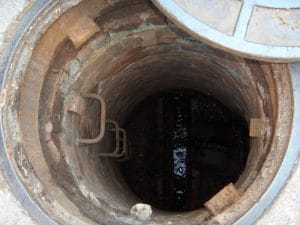 Even though many items can be flushed down the toilet, it’s misleading to believe that everything is ‘flushable’ and safe for our sewer systems and environment. The journey is just beginning when that swirling eddy of water makes everything in the toilet bowl disappear.
Even though many items can be flushed down the toilet, it’s misleading to believe that everything is ‘flushable’ and safe for our sewer systems and environment. The journey is just beginning when that swirling eddy of water makes everything in the toilet bowl disappear.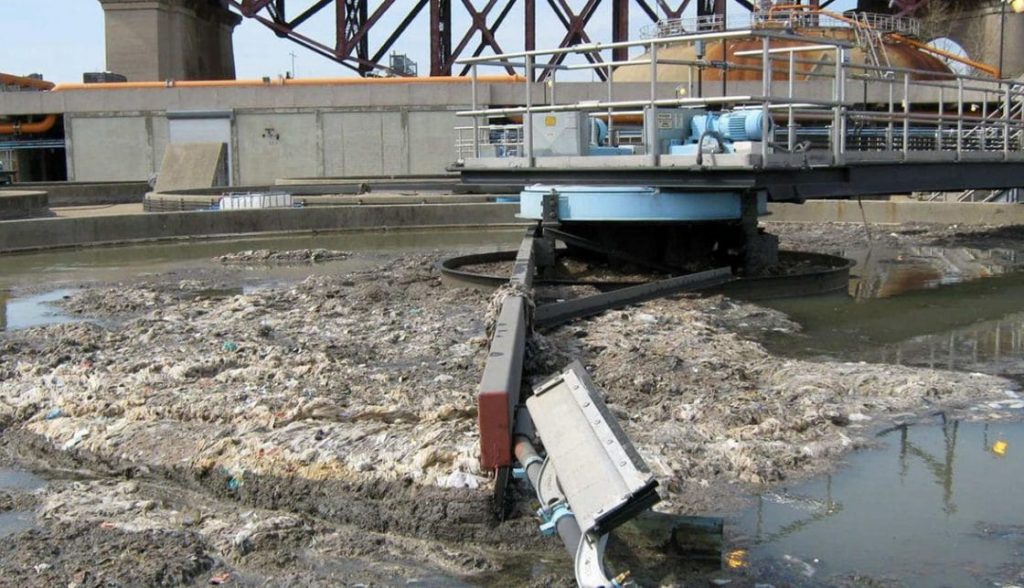
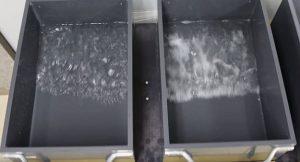 The slosh test checks the potential for wipes to break down in water during agitating conditions. A box containing water and one or more wipes tips back and forth, slowly and repeatedly “sloshing” the wipes for three hours. All fibers from the test are strained from the slosh box and then poured through a 12½-millimeter sieve (consistent with industry guidelines) and rinsed for two minutes to measure the percentage of fiber material that passes through the sieve.
The slosh test checks the potential for wipes to break down in water during agitating conditions. A box containing water and one or more wipes tips back and forth, slowly and repeatedly “sloshing” the wipes for three hours. All fibers from the test are strained from the slosh box and then poured through a 12½-millimeter sieve (consistent with industry guidelines) and rinsed for two minutes to measure the percentage of fiber material that passes through the sieve.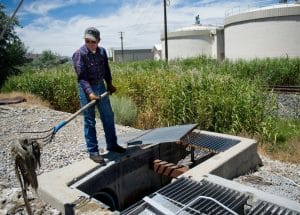 Private and municipal sewer system operators end up sifting through what’s left in the wastewater to clear these obstructions—often costing millions of dollars to maintain and repair.
Private and municipal sewer system operators end up sifting through what’s left in the wastewater to clear these obstructions—often costing millions of dollars to maintain and repair.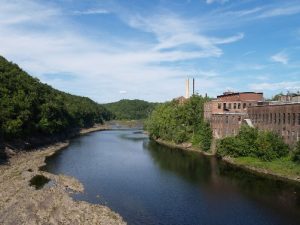 MARLBOROUGH, MA, January 15, 2018 –
MARLBOROUGH, MA, January 15, 2018 –